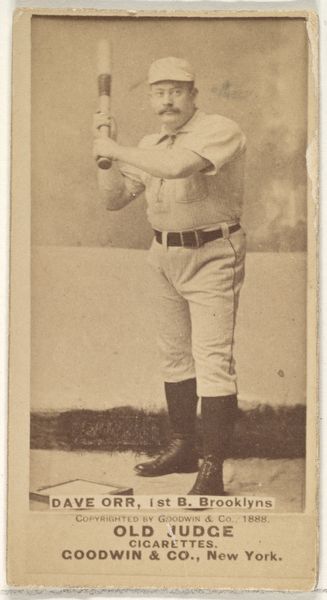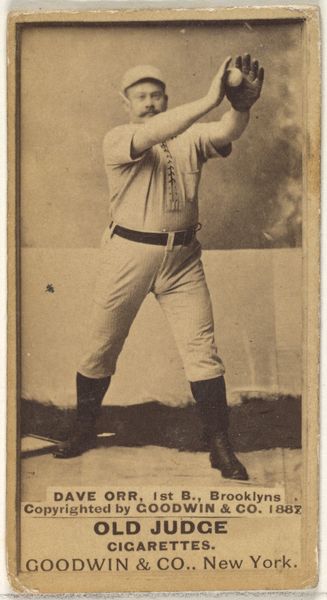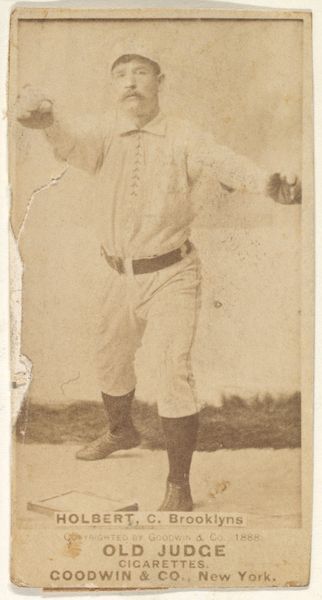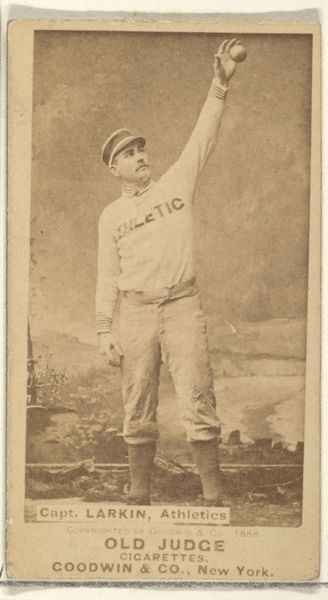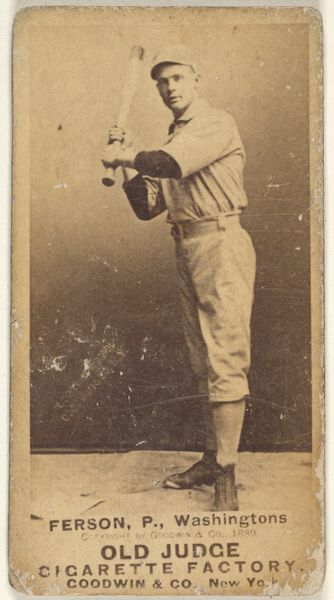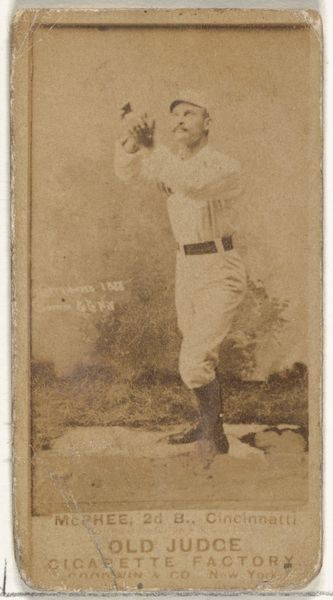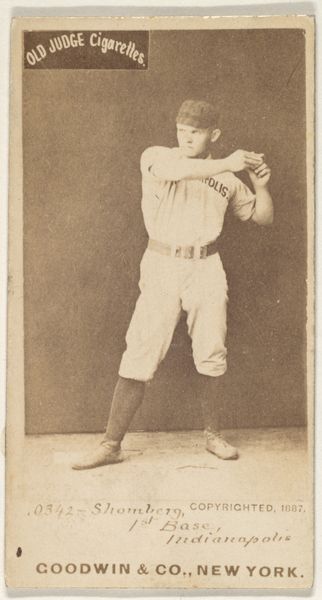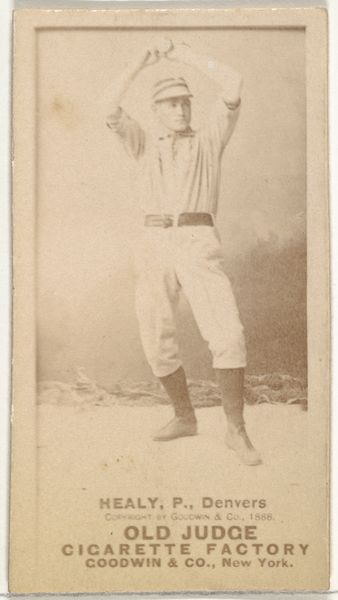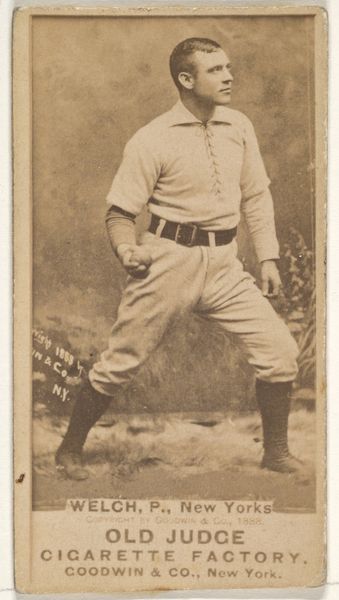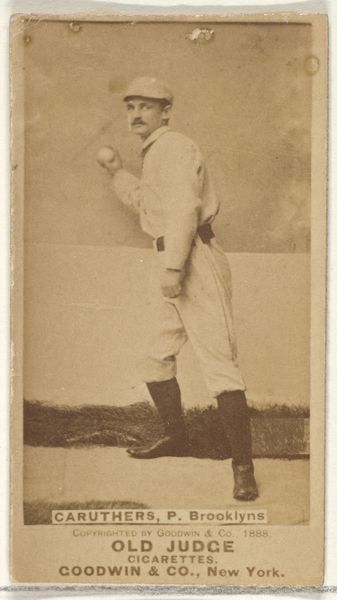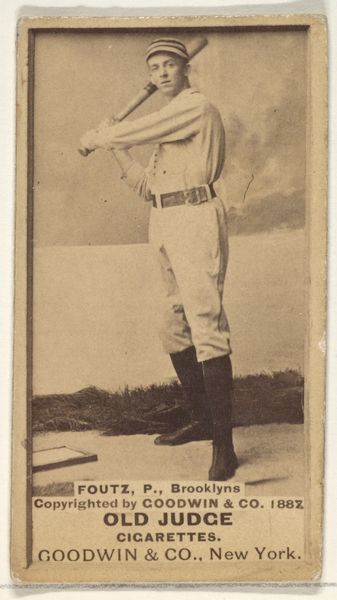
Holbert, Catcher, Brooklyn Bridegrooms, from the Old Judge series (N172) for Old Judge Cigarettes 1888
0:00
0:00
print, photography
#
portrait
# print
#
baseball
#
photography
#
historical photography
#
men
#
athlete
Dimensions: sheet: 2 11/16 x 1 3/8 in. (6.9 x 3.5 cm)
Copyright: Public Domain
Curator: Look at this photograph, dating back to 1888, showcasing Holbert, a catcher for the Brooklyn Bridegrooms. It’s part of the Old Judge Cigarettes series produced by Goodwin & Company. The photograph itself is a print. Editor: Ah, it has this sort of amber-toned serenity, almost dreamlike. The sepia tones, the man's poised stance, there's a strange calm emanating from the piece, though he's right in the middle of action! It's such a perfect capture. Curator: It really is a beautifully staged moment, isn’t it? What's compelling is how it functioned both as art and advertisement, linking early baseball to a growing consumer culture. These were inserted into cigarette packs. Editor: Fascinating! Seeing the commodification of sports figures so early on is telling. I’m thinking about labor, of course, and who benefited most from the image of Holbert. How much did he get, if anything, for this endorsement? The "Old Judge Cigarettes" stamp is so much a symbol of capitalism at the time. Curator: Exactly, it asks a lot about that early image economy, and how athletes were both celebrated and potentially exploited. I see Holbert here, preserved through photography and print, representing idealized masculinity but trapped in the service of consumerism. A curious dynamic! Editor: Indeed! And speaking of that constructed image, it reminds me of how certain athletic ideals were—and still are—often mapped onto bodies. Those heavy clothes feel almost intentionally to hide athleticism in favor of… I am not sure - respectability, perhaps? A strange form of gendered costuming on the athletic male figure? Curator: Possibly. His pose is controlled and refined—far from the unbridled action on the field. This speaks to the curated image the company sought to convey through such advertising. But it is wonderful, as a snapshot. A man ready, caught perfectly, awaiting the falling ball. It leaves me with so many stories in my head. Editor: Absolutely! This baseball card isn’t merely a portrait; it is an index of social, economic, and gendered ideologies from a fascinating historical moment. I really am now so very curious as to what happened to Holbert!
Comments
No comments
Be the first to comment and join the conversation on the ultimate creative platform.
